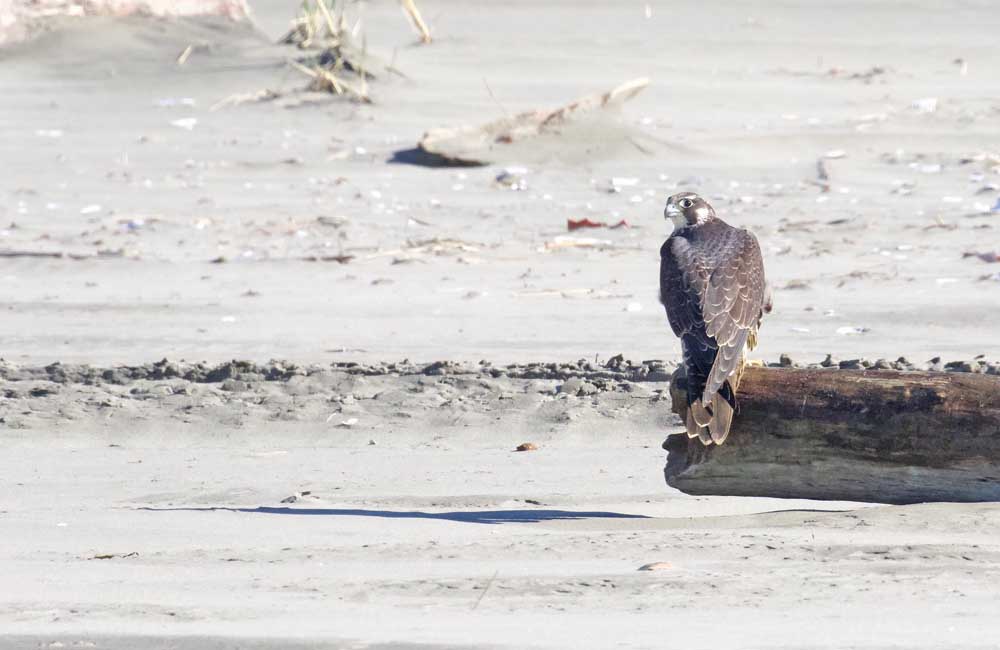Winter raptor survey: A snapshot and update
Published 11:49 am Thursday, April 6, 2023

- Peregrine falcons winter on the Long Beach Peninsula.
Susan Stauffer and I have been surveyors or counters for the winter raptor survey since 2020 but the survey itself marked its 19th year in 2022-2023. Our work has confirmed that during the last four years, the Long Beach Peninsula has shown that it is able to sustain a relatively large population of raptors in winter. This means that prey appears to be plentiful enough to sustain them during the winter months of December, January, and February.
Trending
Surveys are also done in November and March when some raptors, such as the peregrine falcon, will be coming or going on migration to their breeding grounds, while others are preparing to nest or are already on nests.
The project is coordinated by Jeff Fleischer for the East Cascades Audubon society which is in Bend, Oregon. In total there are currently 551 raptor count routes in 6 states and a total of over 450 participants. It is, as Jeff indicates, “a huge citizen science project that has amassed an incredible amount of data on wintering raptors”. These data have been given to “The Peregrine Fund which is building a data base for raptors around the world.” The data base, including the winter raptor survey data, has already been used in a published article that looks at the status of wintering diurnal raptors in the northwest. It demonstrates the value of and therefore, the ability to use data from different monitoring programs to improve inferences into population dynamics. This underlines the importance of the winter raptor survey and its contribution to the conservation of our amazing raptors.
This year we had excellent results for the Long Beach Peninsula. The number of individual birds counted totaled 34 in December 2022. In 2023, 39 individuals were tallied in January, 44 in February and 46 in March. Six species were seen in March including, red-tailed hawk, bald eagle, American kestrel, northern harrier, Cooper’s hawk, and an osprey. Of the 46 individuals 40 were bald eagles (27 adults and 13 sub-adults). These species were observed and counted in each of the months from November to March.
Trending
Additional species counted by the two of us included the peregrine falcon, barred owl, and sharp-shinned hawk. Our top four species mirrors that for the routes overall. The top 5 species over all the routes in this project for the month of January are red-tailed hawk, American kestrel, northern harrier, bald eagle, and rough-legged hawk. These five species accounted for 92.5% of the total birds counted in January. I am sure the data for February and March 2023 will reveal similar results.
As I mentioned in an earlier article on the winter raptor survey, “raptors of the peninsula count in more ways than one.” They are not only of local interest but also of interest to the broader, international community of scientists. The state of our bird population tells us much about the health of our environment and underlines the importance of preserving, protecting, and restoring the habitat that these species need. It is important for us to do our part.
April 22 is earth day. To celebrate, an earth day fair will be held at the River City Playhouse on Lake Street in Ilwaco from 2-4 p.m. There will be music by the Oystercrackers, earth-friendly crafts and local history activities. Susan Stauffer and I will be there with bells on… birds, mammals, and other critters will be our focus. We hope to see you there!
Happy birding!









